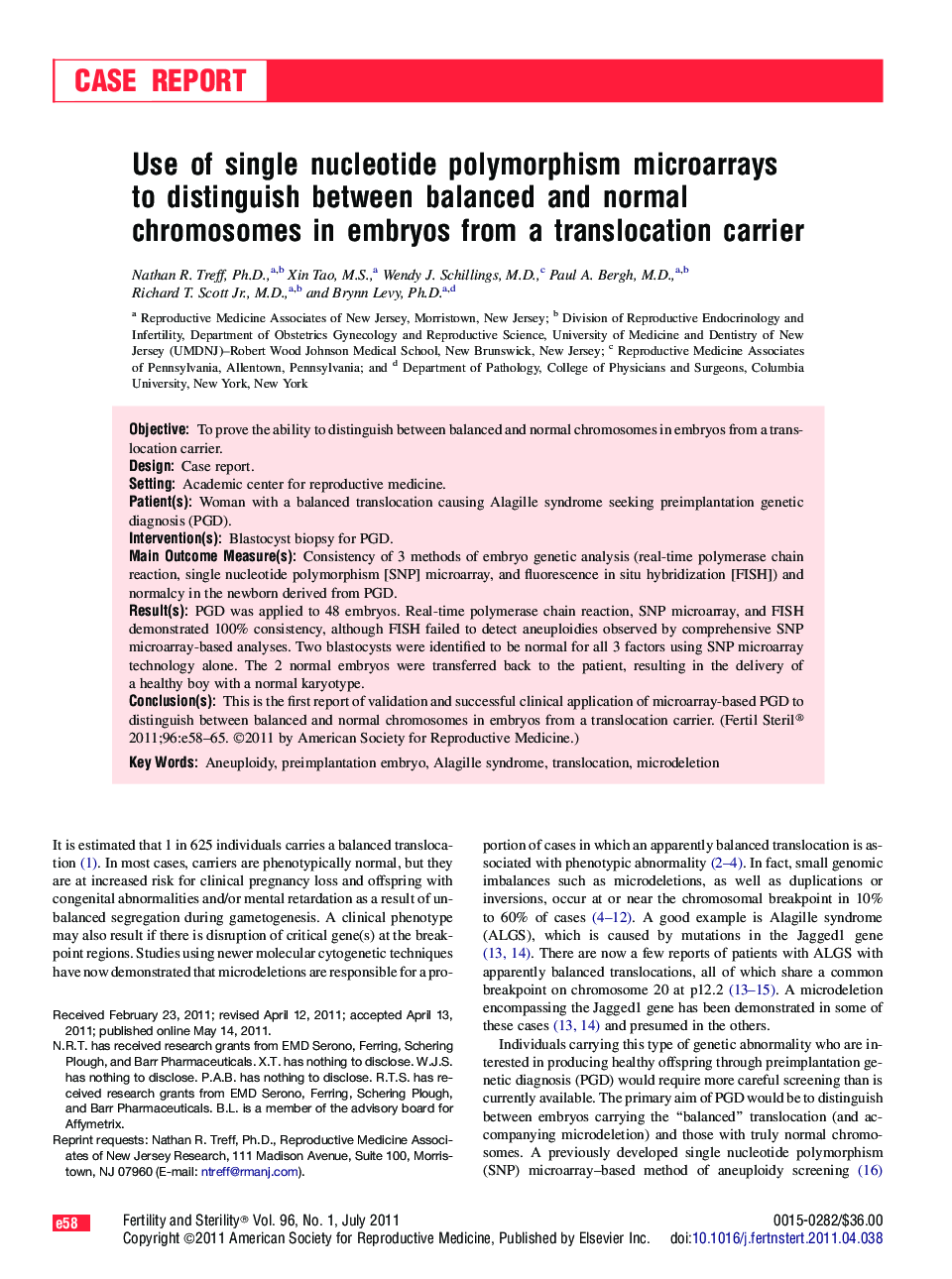| Article ID | Journal | Published Year | Pages | File Type |
|---|---|---|---|---|
| 3939399 | Fertility and Sterility | 2011 | 8 Pages |
ObjectiveTo prove the ability to distinguish between balanced and normal chromosomes in embryos from a translocation carrier.DesignCase report.SettingAcademic center for reproductive medicine.Patient(s)Woman with a balanced translocation causing Alagille syndrome seeking preimplantation genetic diagnosis (PGD).Intervention(s)Blastocyst biopsy for PGD.Main Outcome Measure(s)Consistency of 3 methods of embryo genetic analysis (real-time polymerase chain reaction, single nucleotide polymorphism [SNP] microarray, and fluorescence in situ hybridization [FISH]) and normalcy in the newborn derived from PGD.Result(s)PGD was applied to 48 embryos. Real-time polymerase chain reaction, SNP microarray, and FISH demonstrated 100% consistency, although FISH failed to detect aneuploidies observed by comprehensive SNP microarray-based analyses. Two blastocysts were identified to be normal for all 3 factors using SNP microarray technology alone. The 2 normal embryos were transferred back to the patient, resulting in the delivery of a healthy boy with a normal karyotype.Conclusion(s)This is the first report of validation and successful clinical application of microarray-based PGD to distinguish between balanced and normal chromosomes in embryos from a translocation carrier.
